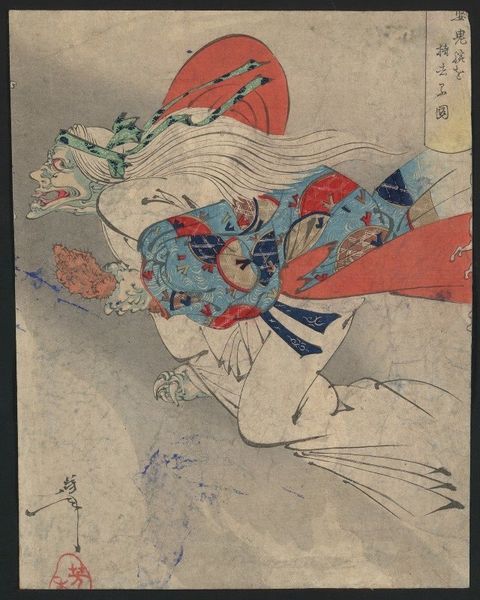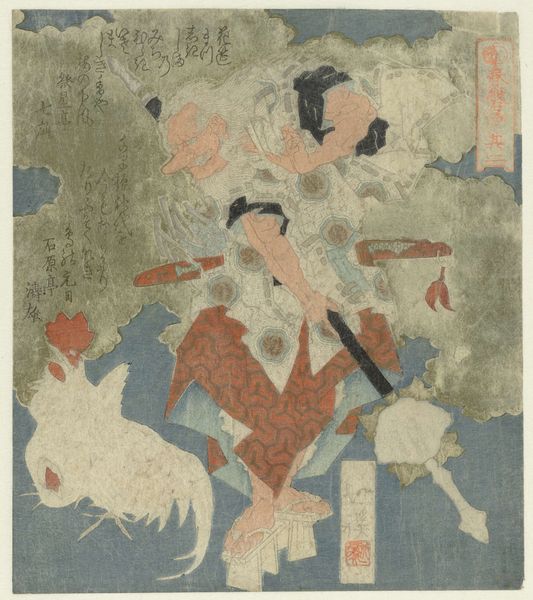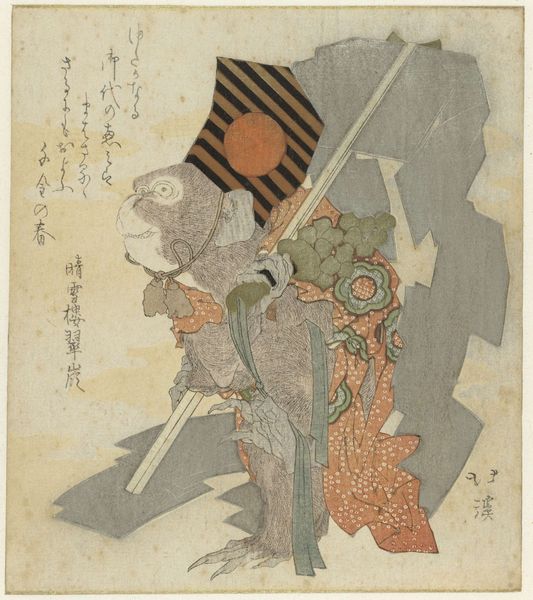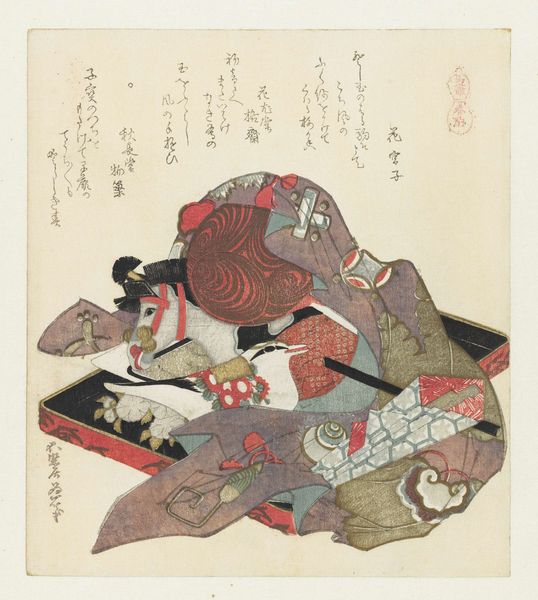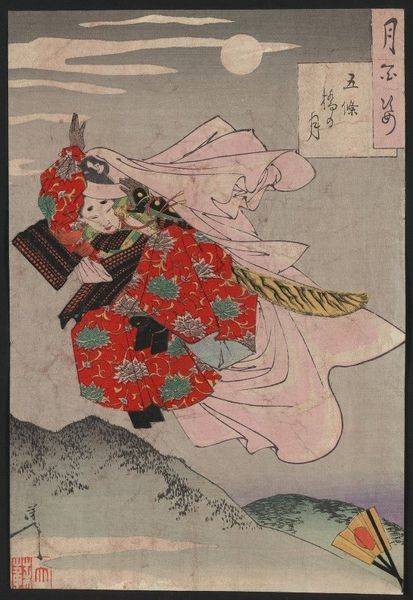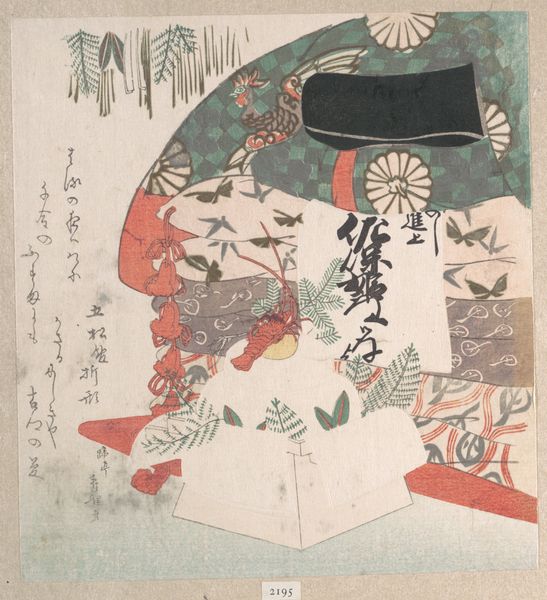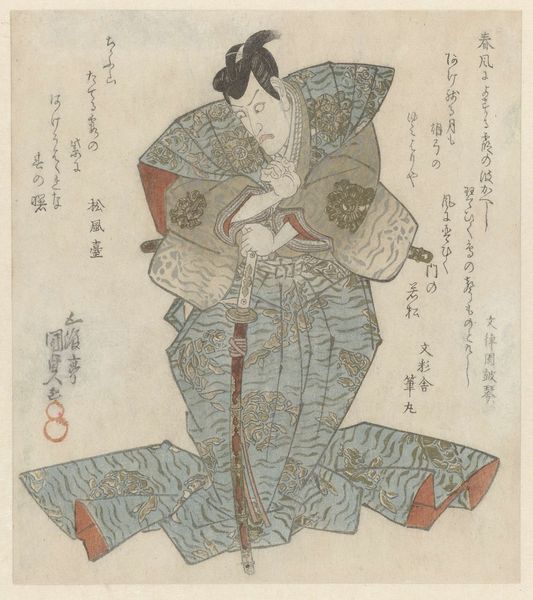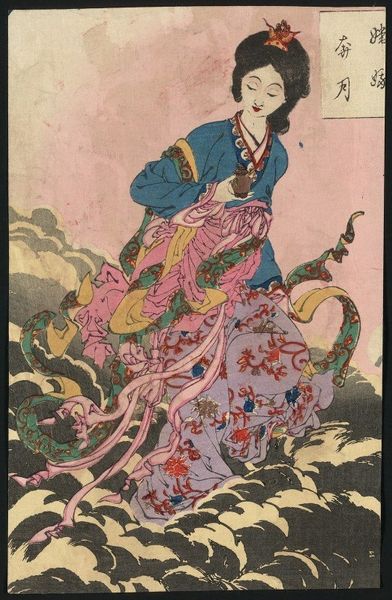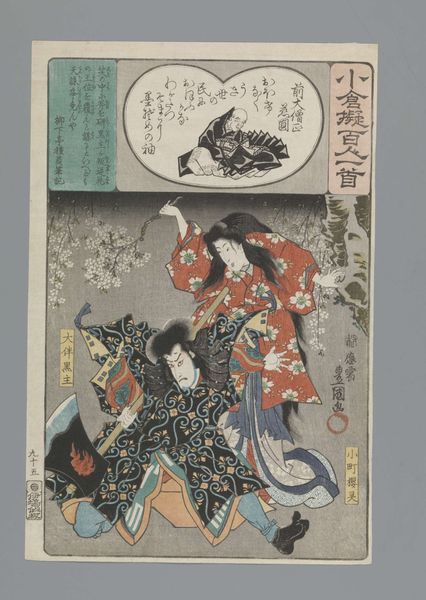
Copyright: Public Domain: Artvee
Editor: This woodblock print, "Jōganden no tsuki" or "Jōganden Moon," was created around 1880 by Tsukioka Yoshitoshi. The palette is subdued, but the falling leaves add some warmth. The hunter, weighed down by the deer, almost looks burdened rather than triumphant. What can you tell me about it? Curator: It’s interesting that you mention the burden, because, from a historical perspective, this image is loaded with symbolism. Yoshitoshi was working during the Meiji Restoration, a period of immense social upheaval as Japan modernized. This print engages with a nostalgia for older, idealized times, depicting a lone hunter and referencing the traditional ukiyo-e style. But it also implicitly acknowledges the costs of progress, the weight of the past, and the realities of contemporary life encroaching upon tradition. What do you make of the moon’s placement and its luminescence? Editor: It’s very high and distant. Perhaps it symbolizes an unattainable past or a fading ideal? I hadn't really considered the political context when thinking about it! Curator: Exactly. Consider how the museum itself functions – is it preserving a sanitized, romanticized view of the past? Yoshitoshi's art, presented in this setting, inevitably invites a dialogue on cultural identity, memory, and national narrative. Do you think the display of such art affirms or challenges existing power structures? Editor: It probably does both! It helps us remember the past while encouraging reflection on how it informs the present, and the kind of future we might choose to build. Curator: Precisely! So much is subtly packed into these beautiful ukiyo-e. Editor: Definitely food for thought. I'll never look at a woodblock print the same way again. Thanks!
Comments
No comments
Be the first to comment and join the conversation on the ultimate creative platform.
